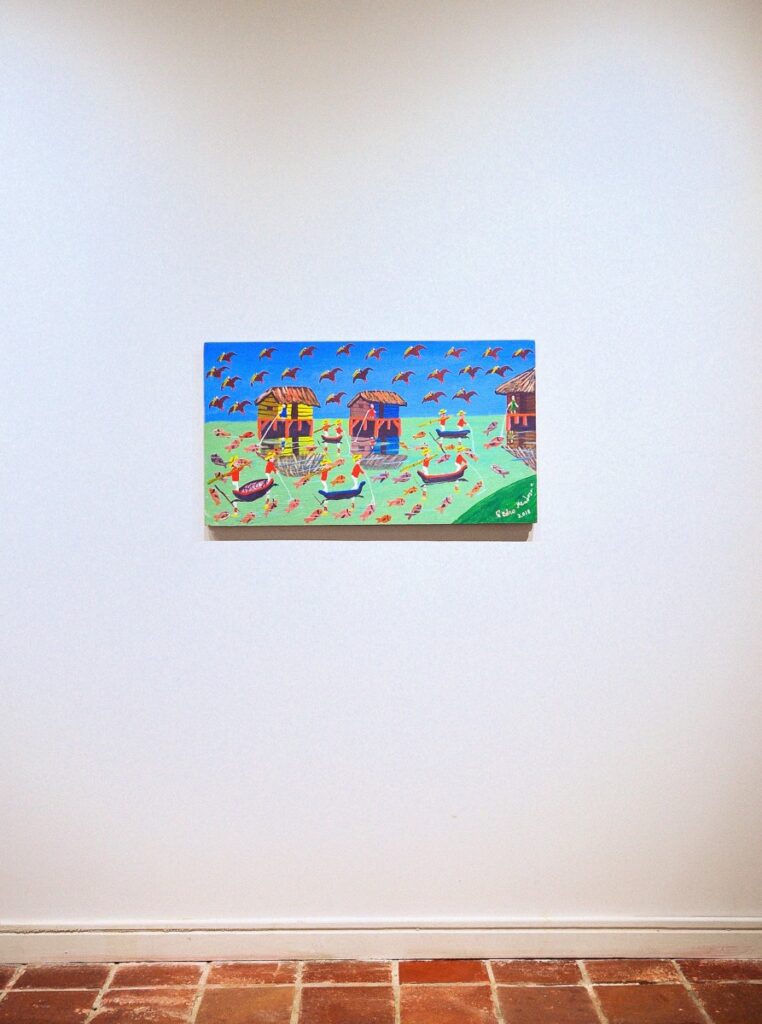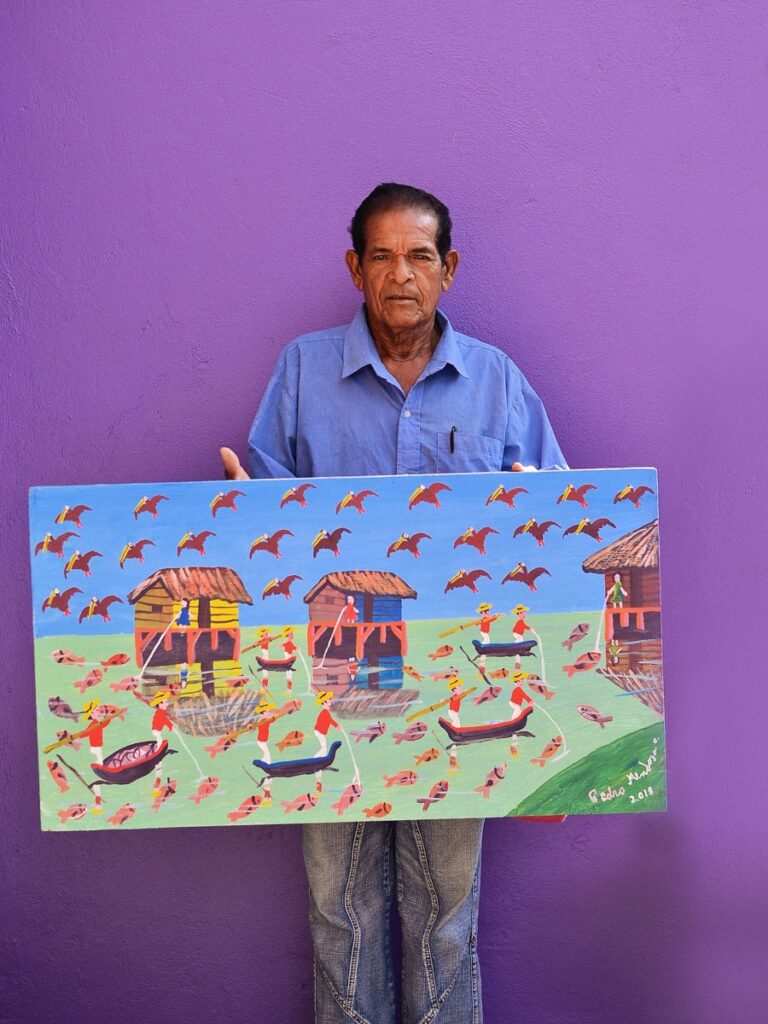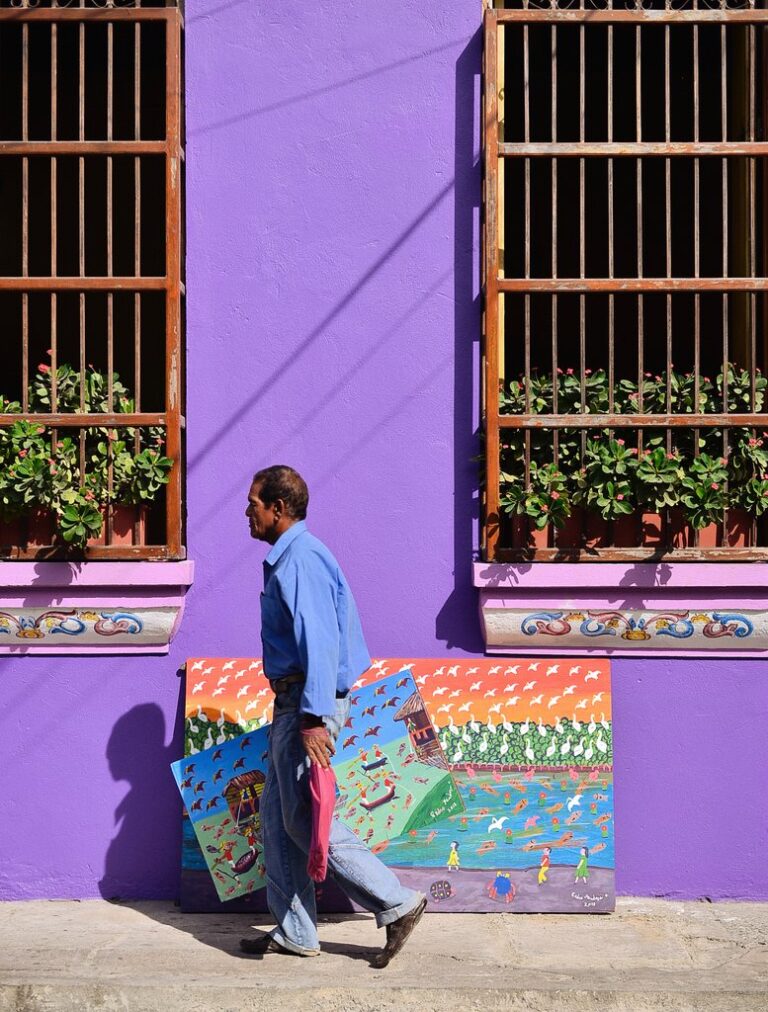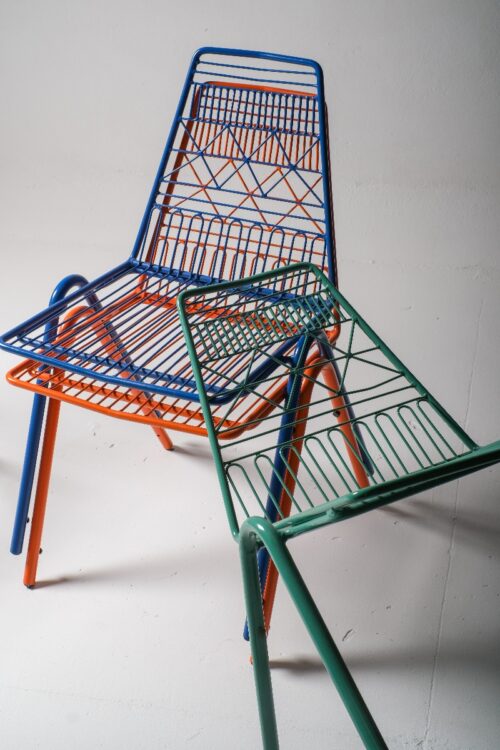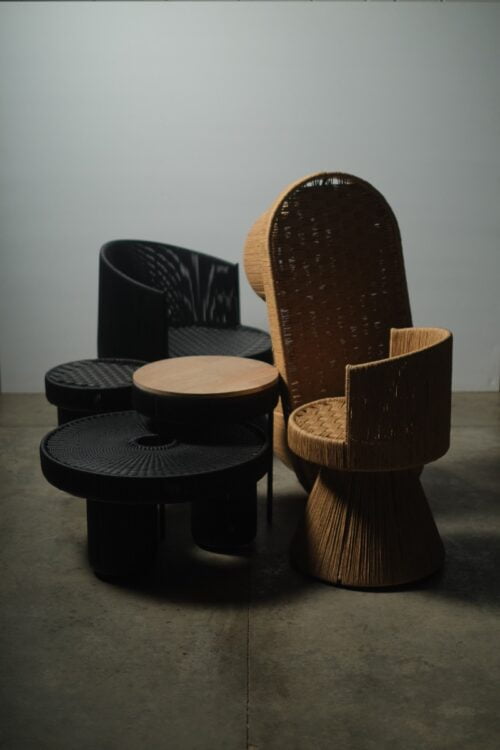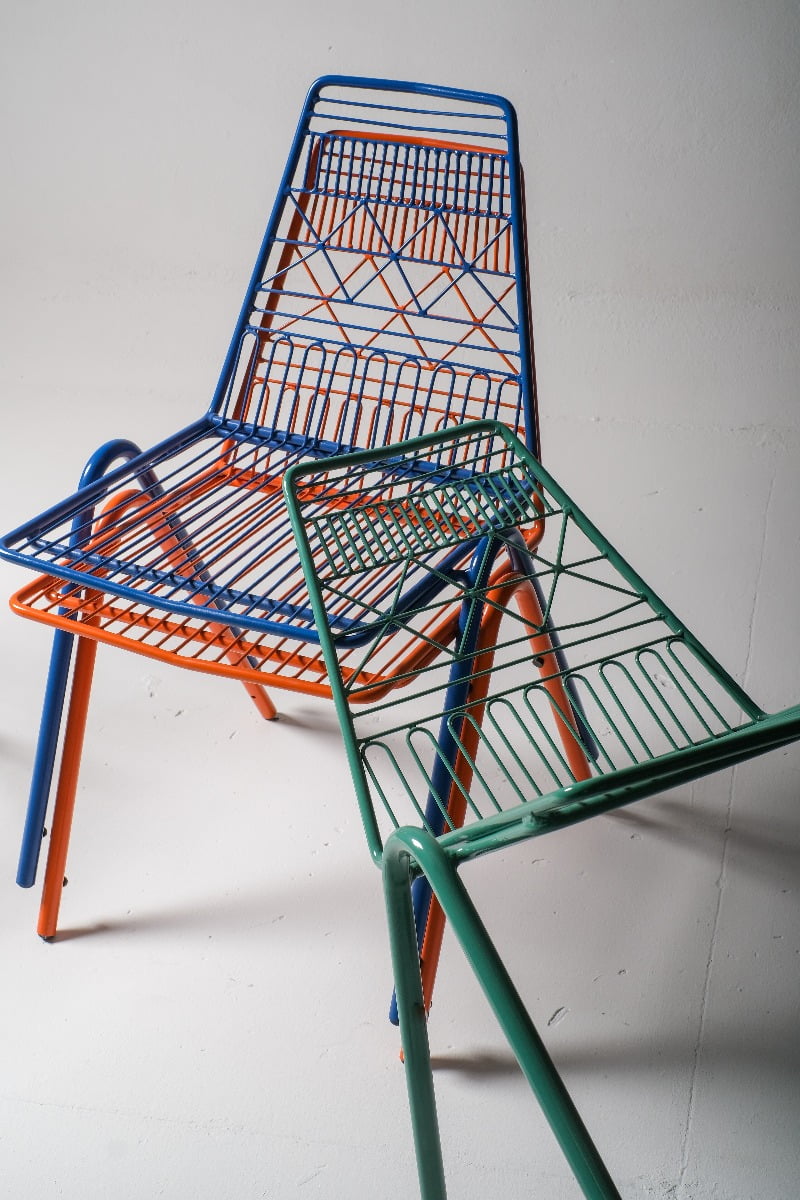Visiting Pedro Mendoza and not being transported to childhood is a challenge, the entrance to Ciénaga, the acacia trees along the roadside that adorn the entrance to the neighborhood of the Smurfs, as they called it because the houses were small. Any resemblance to Macondo is purely coincidental.
In a small house with a calabash tree and a flowering almond tree at the door, lives Pedro. He was waiting for us with his art arsenal, ready to quickly answer each question.
He began by showing us his works collected in a notebook that accompanies him like his travel log.
He talks about his father, his inspirational figure, a poet who unintentionally instilled in Pedro the curiosity to see beyond, to the extent that he dreamt and recreated the present, renting himself to dream in each painting.
Pedro is a lifelong Cienaga resident and a Magdalenense at heart. He remembers every event that occurred in this area: the arrival of the train, the banana plantations, the festivities, and the unmistakable smell of bananas.
Pedro is part of the “spontaneous generation of painters,” those who hide under a false innocence.
He makes an ambitious and coherent proposal, suggesting that Ciénaga is the legitimate Macondo because it was where they grew bananas, while in Aracataca, they only peeled and planted corozo palm trees.
He is the father of 5 children and separated. He sold his first painting in El Rodadero to a foreigner who was interested in his unique style of painting. He recalls that horror magazines inspired him to depict human figures.
After selling his paintings in El Rodadero, he moved to Calle 22 Avenida Santa Rita, where he remembers that a teacher was his first customer. He even hung the painting on her wall. He views this moment as a leap to greatness because it was his first large work.
He currently doesn’t have a specific place to buy materials, but initially, it was at a hardware store in Ciénaga, near his mother’s house on Calle 22 in Ciénaga.
His greatest inspiration is the Caribbean, and he is capable of balancing events that allow us to feel the rhythm carried by the sea waves.
From a very young age, he felt inclined towards painting, and at the age of 12, he created his first works. His education has been entirely self-taught, which has led him to explore various painting techniques and mediums, allowing him to develop his unique style in terms of form and color.
His work was first exhibited individually in 1974 at the Cultural Area of the Banco de la República in Barranquilla, where he has also held exhibitions at the Colombo-French Alliance (1976, 1989), the Colombo-American Center (1986), and the Autonomous University of the Caribbean (1995). In Santa Marta, he exhibited at the Bolivarian Museum of Contemporary Art (1987), the University of Magdalena (1996), and the French Alliance (2004, 2014). In Bogotá, his works were displayed at the Museo de Indias Gallery (1976) and the French Alliance (1977, 1985), among other exhibitions. Internationally, his work has been exhibited in cities like Metz and Paris in France.
In 1977, he was selected by the El Espectador newspaper as one of the best painters in Colombia. In 1984, he illustrated the Tribute to Coastal Painting Calendar of the Atlantic Lottery, alongside other artists like Alejandro Obregón and Freda Sargent.
In 2014, his work was included in the Cultural Heritage of Ciénaga by the Ministry of Tourism and the Colombian Tourism Promotion Fund.
Pedro Mendoza lives and works in Ciénaga, Magdalena.
Text by Less Herrera // @lessismoreamore
Photo by Juan Vives Calle // @_vivescalle”

